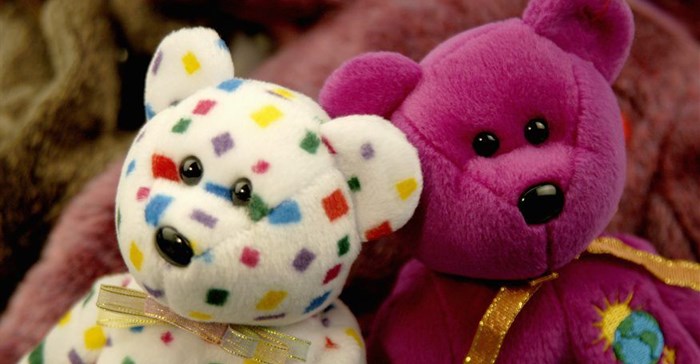






Bitcoin was worth just a few US cents when it began life in 2009 and last week changed hands for a staggering $17,000 despite having no central bank backing and no legal exchange rate.
Here are some of the most wild speculative bubbles in history -- ranging from tulips to teddy bears.
At the beginning of the 17th century, exotic tulips became the ultimate luxury accessory and status symbol for rich and poor alike.
People mortgaged houses and sold businesses just to buy a bulb. At one point, a single tulip bulb fetched up to $150,000 at today's prices.
With prices rising to more than 100 times the average annual income, bulbs were being traded for land, livestock and houses - a rare bulb was even considered an acceptable dowry for a bride.
During what is commonly viewed as the first speculative bubble, rumours were deliberately spread to influence prices and there were reports of skullduggery such as training animals to dig up tulip fields.
The bubble burst in 1637 after a disappointing turn-out to a tulip auction in Haarlem. Prices plunged, banks failed and people lost their life savings -- all for a pretty flower.
In the mid-1980s, the Japanese economy ruled the world. Its high-quality, technologically advanced products dominated export markets and everything seemed to be "made in Japan."
Fuelled by this success -- and ultra-loose monetary policy -- Japan's Nikkei index tripled between 1985 and 1989 and Japanese firms were worth nearly half of the entire world's corporate sector.
With all this money sloshing around and credit cheap and easy to obtain, speculators piled into real estate and prices exploded.
At the height of the boom, it was said the Imperial Palace in central Tokyo was worth the same as the whole of California.
Government policies aimed at deflating the bubble ended up pricking it violently. The stock market plummeted and house prices went through the floor, ruining millions.
The bust ushered in what economists called a "lost decade" of economic stagnation and deflation, the effects of which are still being felt today.
The internet and tech boom of the late 1990s resulted in some "dotcom" companies being valued at billions of dollars despite not having made a cent in profits.
Young internet tycoons became millionaires overnight as investors piled into any company with a dotcom domain name in the belief the web had upended the rules of business.
At the height of the boom came the AOL-Time Warner merger, at the time the biggest in corporate history.
The boom prompted then Federal Reserve chairman Alan Greenspan to warn about "irrational exuberance" in asset prices, widely seen as a warning about the dotcom bubble.
Funding dried up as it became clear many internet companies held wildly inflated valuation based on pie-in-the-sky profit forecasts.
Thousands of internet companies bit the dust and investors lost trillions of dollars as the tech-heavy Nasdaq market spiralled downwards.
The subprime boom-and-bust of the late 2000s was based on extremely complex financial instruments that "sliced and diced" risky mortgage assets and bundled them together.
Banks and mortgage lenders offered credit to uncreditworthy homeowners in the belief that by packaging these loans together, the risks could be reduced.
The financial wizardry fuelled a housing market boom as speculators snapped up houses they never intended to live in to build up their "collateralised" portfolio.
The bust came when investors realised that the flipside of packaging risk together was that they could not tell where the bad loans were lurking.
The subprime-fuelled housing boom turned to bust and prices plunged, with millions of families losing their homes.
The stock market crashed, unemployment ballooned and the US banking system buckled to the point of implosion, with Lehman Brothers collapsing in 2008.
A lesser known tale of boom-and-bust is the Beanie Baby craze that occurred around the same time as the internet bubble.
Small stuffed toys worth around $5 became such a hot craze that people bought them for thousands of dollars, convinced their prices would continue to rise.
The firm that manufactured them, Ty, enjoyed sales of more than $1bn and at one point, trade in Beanie Baby toys represented as much as one tenth of the trade on eBay.
The crash came at the end of the 1990s when Ty announced it was ending the toy.
Far from creating excitement by reducing supply, the market was spooked, and soon bears that had been fetching thousands were selling three for $10.

For more than two decades, I-Net Bridge has been one of South Africa’s preferred electronic providers of innovative solutions, data of the highest calibre, reliable platforms and excellent supporting systems. Our products include workstations, web applications and data feeds packaged with in-depth news and powerful analytical tools empowering clients to make meaningful decisions.
We pride ourselves on our wide variety of in-house skills, encompassing multiple platforms and applications. These skills enable us to not only function as a first class facility, but also design, implement and support all our client needs at a level that confirms I-Net Bridge a leader in its field.
Go to: http://www.inet.co.za